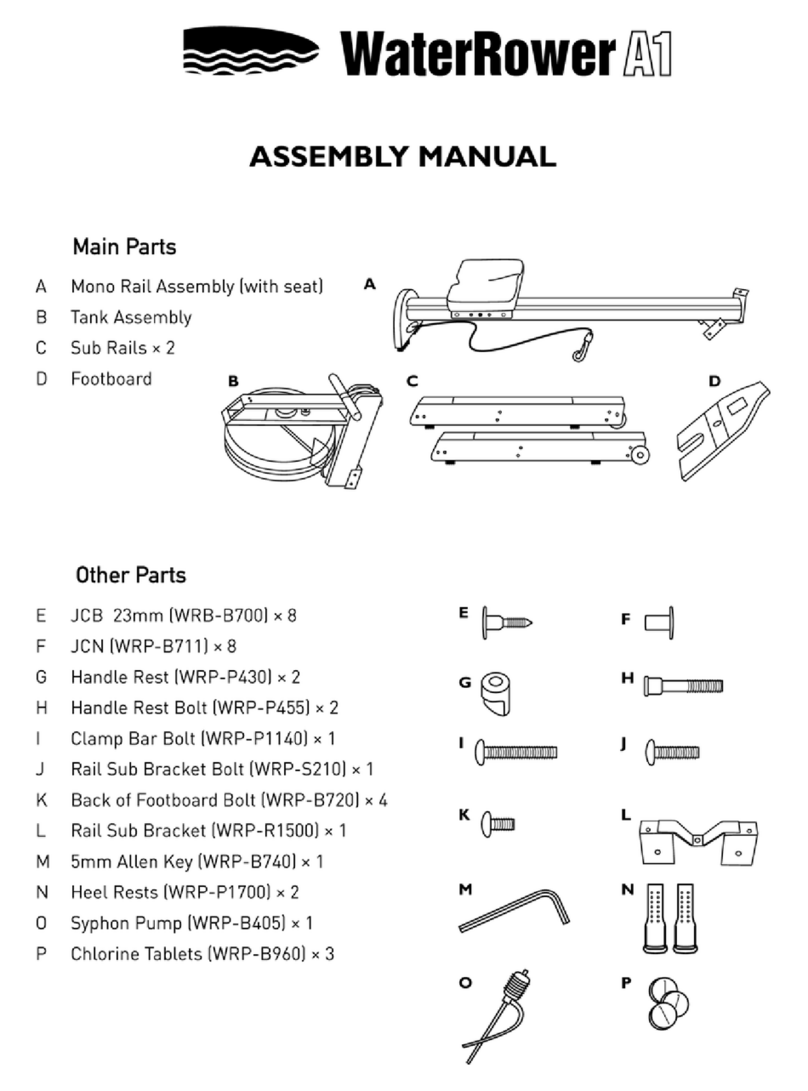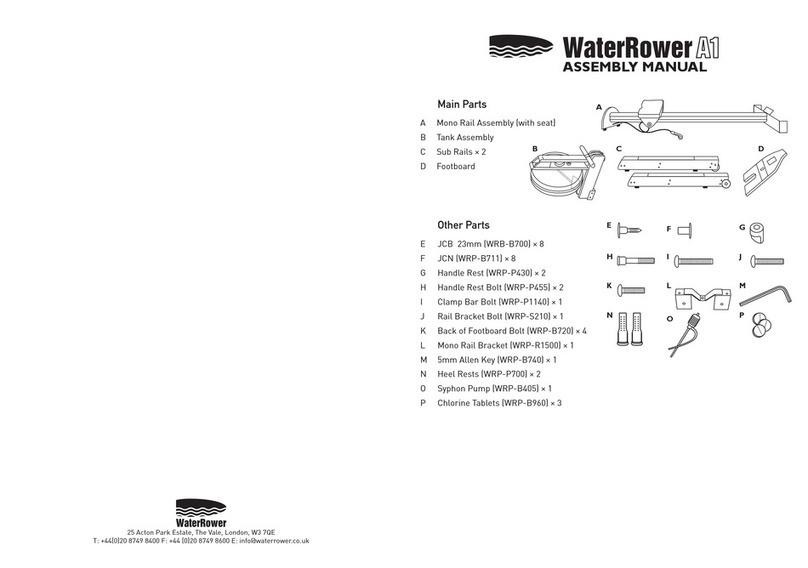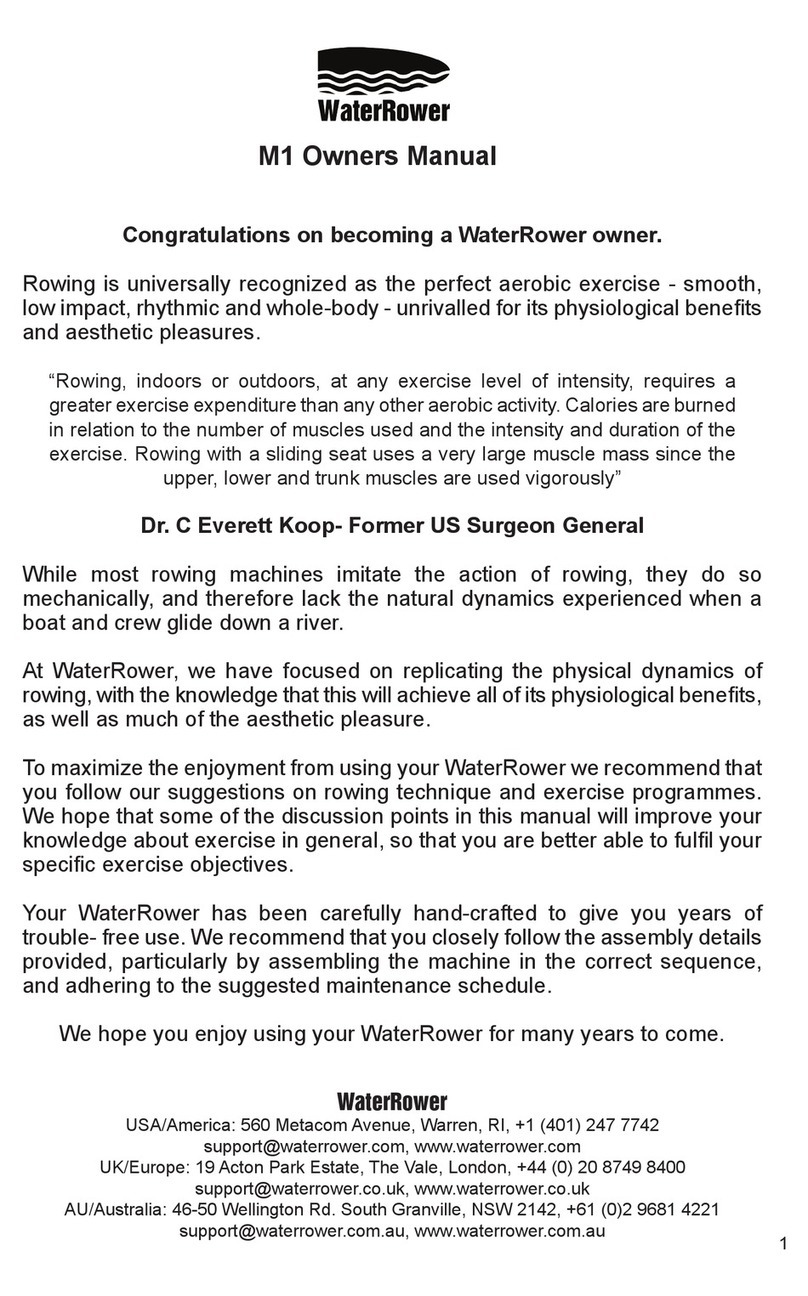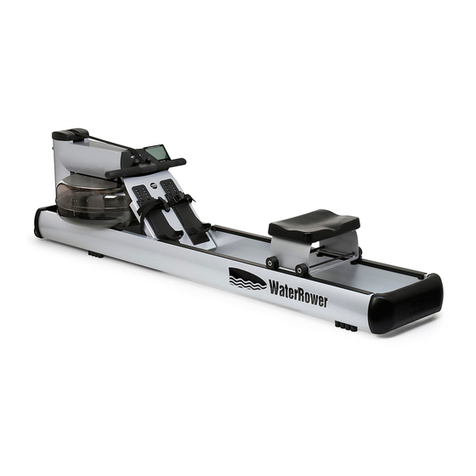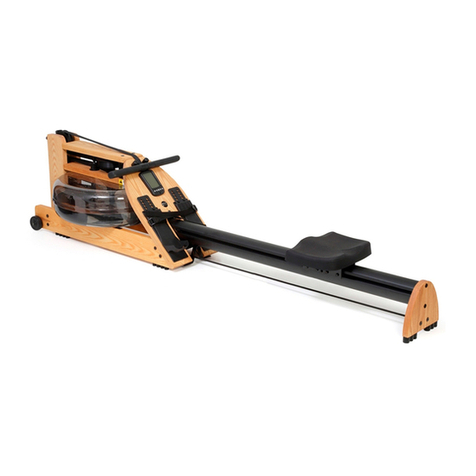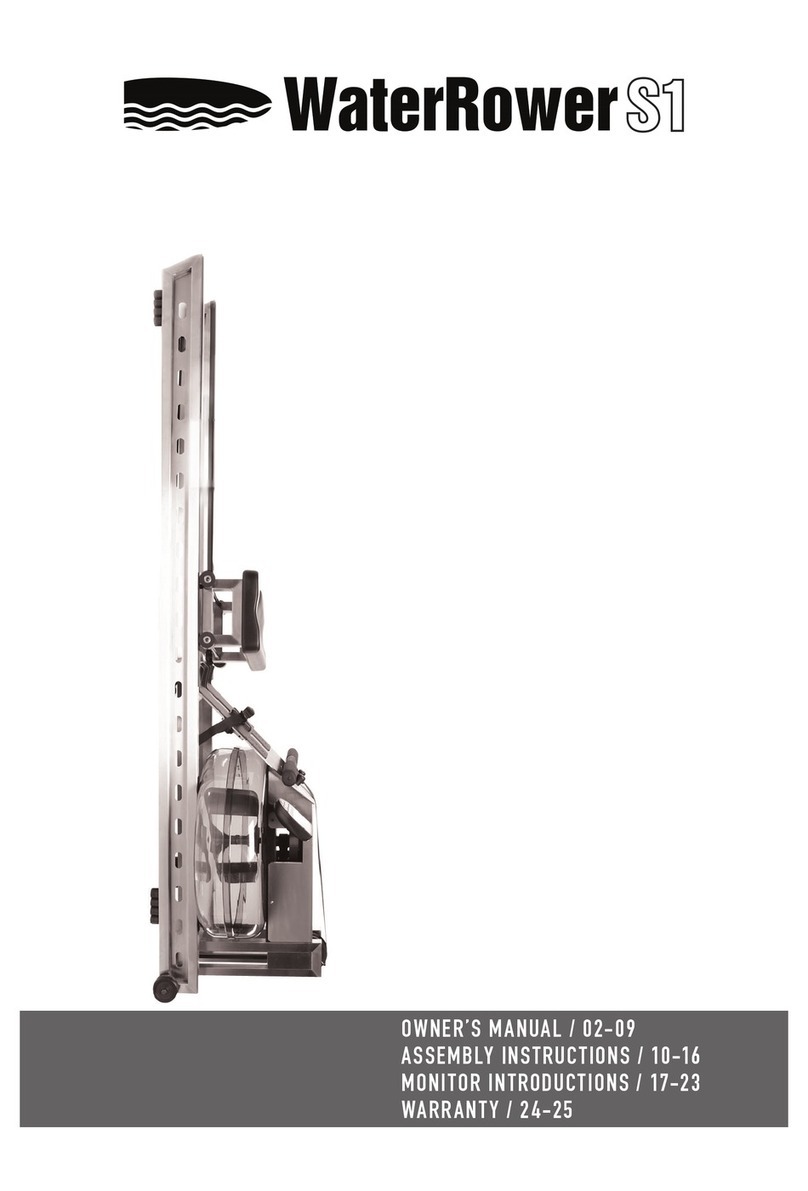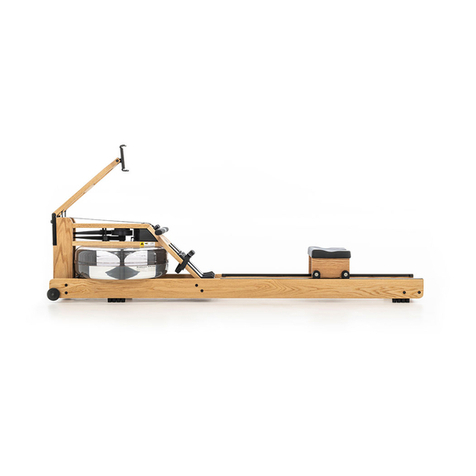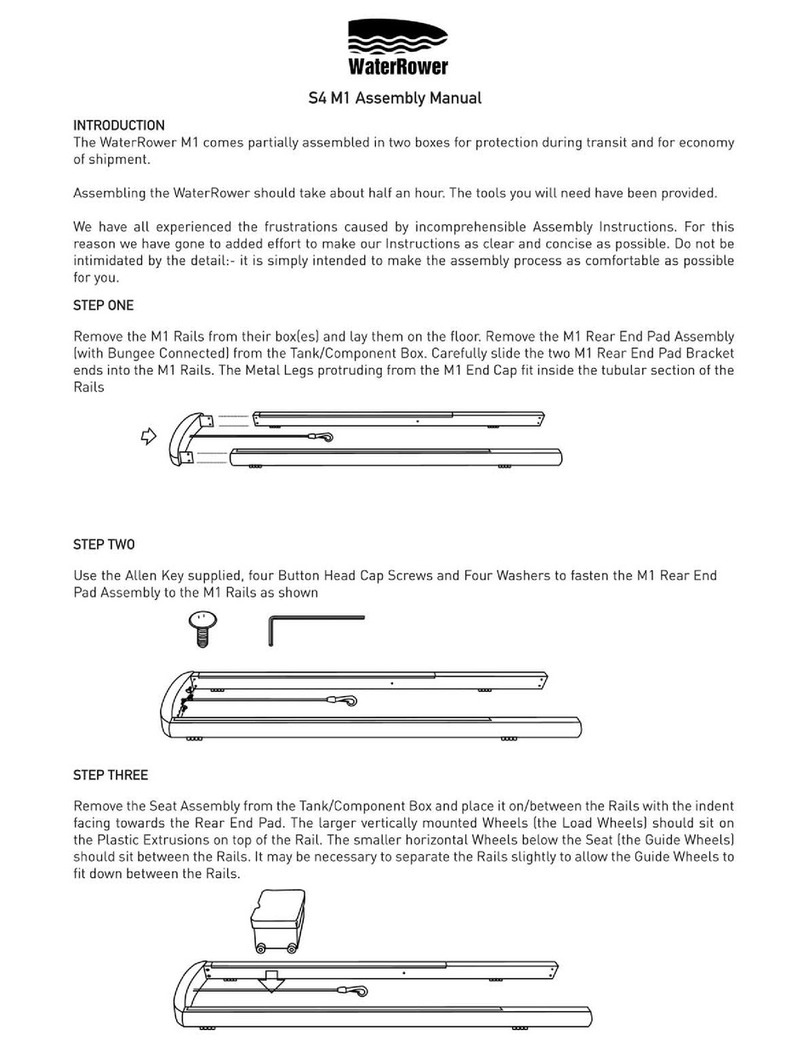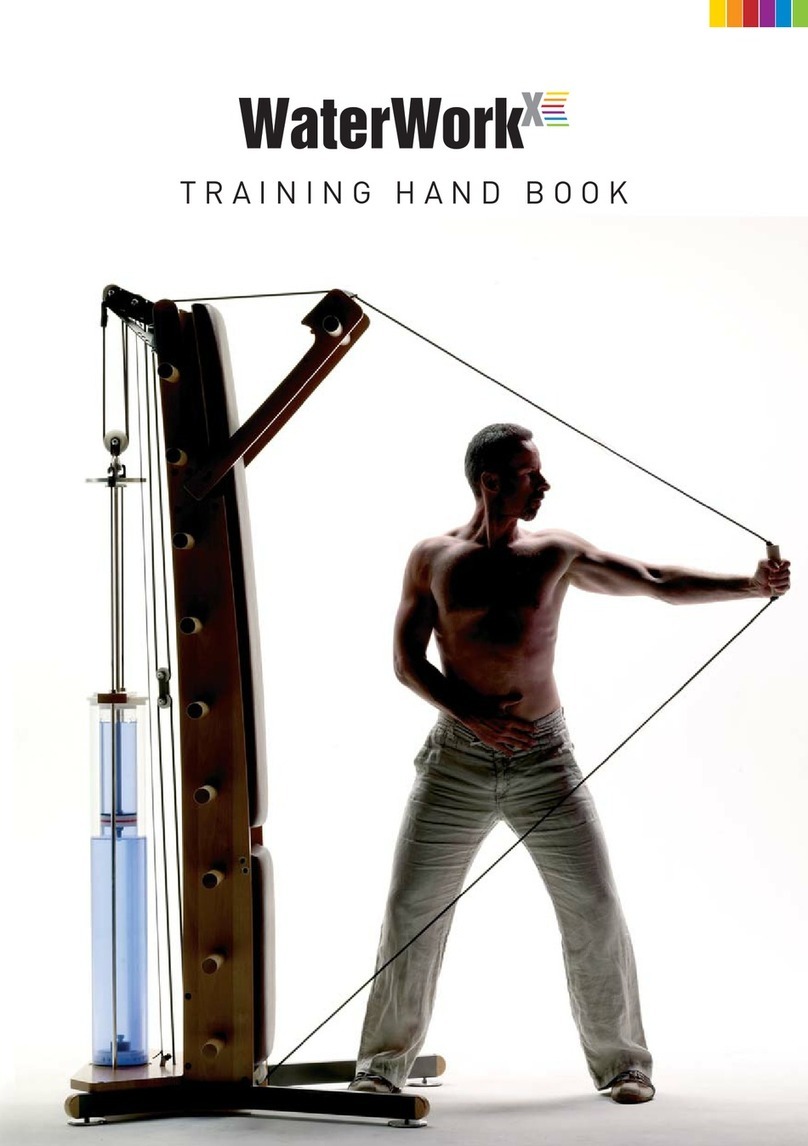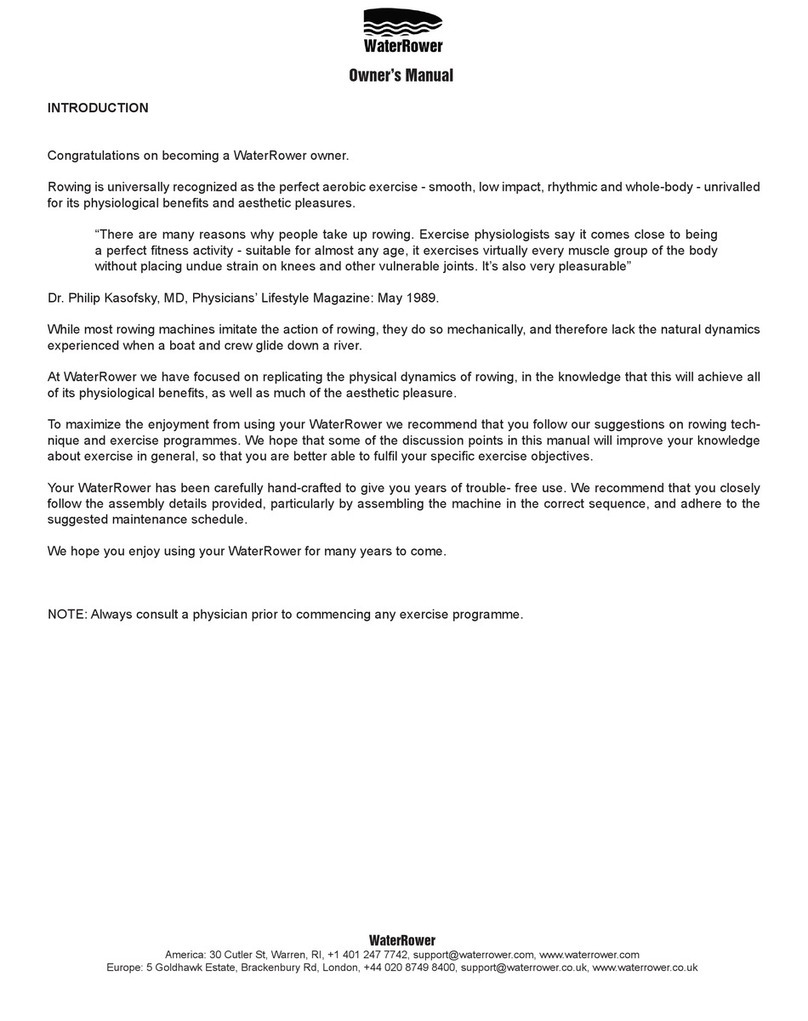
WATERCOACH
WaterCoach is a rowing education program designed to broaden the knowledge
of rowing as a fitness pursuit. WaterCoach consists of three rowing education
programs for the WaterRower owner, fitness professional/instructor and the
general rowing machine user in the gym:
• WaterCoach Home - personal training advice for the WaterRower owner.
• WaterCoach Professional - a rowing education program for the fitness
professional/ instructor. ACE certified course.
• HowToRow - for the rowing machine user, at a gym.
We hope that this expanded knowledge enables you to realize the unrivalled
physical benefits of rowing and get the best from your WaterRower. For more
information, please visit www.HowToRow.com.
YOUR EXERCISE PROGRAM
Most of us recognize the benefit of exercise and the potential improvements
to our general health and well-being. However, few of us fully understand the
physiology of exercise and the best means of achieving our specific exercise
objectives.
In order to get the most out of any exercise program, it is essential to have an
understanding of what your exercise objectives are. These may include reducing
or maintaining weight, improving general strength, developing bulging muscles,
improving sporting competitiveness or simply avoiding the health consequences
of a modern sedentary lifestyle. It is important to set a few different types of
objectives.
CATCH POSITION
Sitting tall, arms straight reaching
forward, shoulders relaxed, head up, eyes
looking forward, legs compressed and
shins vertical.
DRIVE PHASE
Drive back with the legs, arms hang off the
handle and only begin to bend once handle
is above the knees, torso is strong with
good posture and body angle opens up
slowly as you drive the legs.
RELEASE POSITION
Legs straight, handle drawn to chest,
sitting back just past the vertical, torso
firm, shoulders relaxed, head up and eyes
looking forward.
05. 06.
MAINTAINING AND CLEANING
To maintain the appearance and integrity of your WaterRower it is necessary to
keep the machine clean. It is particularly important to ensure that there is no dust
build up in the clutch and belt mechanism between the top and bottom decks.
Dust can be removed by using a cloth or vacuum cleaner.
The surface of the Rails must be kept clean to prevent dust and dirt from
deteriorating the Seat Wheels; the rails can be cleaned by wiping with a damp
cloth. The surface of the tank can be cleaned, however, please ensure you read
the instructions for any cleaning fluids prior to use: do not use methylated
chlorates or ammonia based fluids.
DO NOT USE METHYLATED SPIRITS, CHLORATES, BLEACH OR AMMONIA BASED
FLUIDS WHEN CLEANING ANY PART OF YOUR WATERROWER. The use of
improper cleaning products could void the warranty.
MAINTAINING THE FRAME
The metal surface can be wiped clean with a damp cloth and a small amount of
nonabrasive cleaner can be used. We do not recommend storing the WaterRower
outside. The use and/or storage of the WaterRower in inclement weather,
including, but not limited to, extreme temperatures and moisture could void the
warranty.
STORAGE OF YOUR WATERROWER
Your WaterRower can be stored upright. Lift the rear leg end, pull the
WaterRower towards you and use the momentum to stand it in an upright
position. When storing the WaterRower, please ensure the seat is in the forward
position (close to the footboard). When stored upright the WaterRower is stable
and it only takes the space of a chair.
USING YOUR WATERROWER
The Rowing Action uses 84% of your muscle mass; from the tips of the fingers
holding the handle/oars, to the balls of the feet connected to the footboard/boat,
all the muscles between these 2 points contribute to the Rowing Action.
The Rowing Action is comprised of both fast (drive phase) and slow (recovery
phase) movements. It is important to combine these 2 movements into a rhythm
in order to create a smooth, flowing, unhurried Rowing Action. The following
diagrams show 3 basic movements of the Rowing Action.
Allow yourself the first few rowing sessions to practice the correct positions and
phases as well as the correct ratio and rhythm of the rowing action. With regular
rowing, the technique will become easier and you will soon experience the
physiological benefits of rowing.
Please visit www.HowToRow.com to learn more about rowing technique.


















